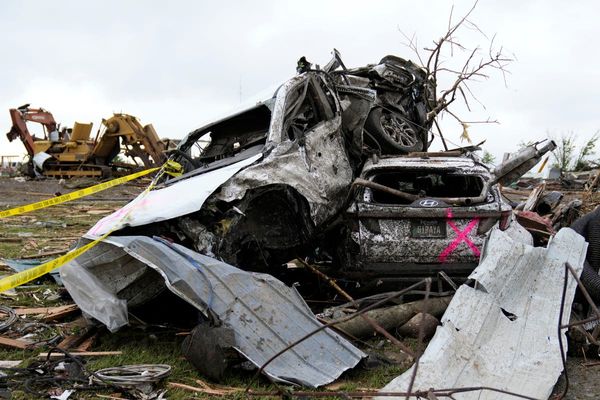
Australia’s east coast is shivering through an unseasonal cold snap with the cloudy, wet and windy Easter weekend weather expected to linger.
Much of the south-east coast, including New South Wales, Victoria and Tasmania will experience cold weather throughout the week, with cooler-than-average temperatures expected until at least Thursday.
Minimum temperatures will stay steady at 12C throughout the week in Melbourne, with maximums rising above 20C from Thursday.
It comes after a weekend where temperatures plunged to between 5 and 10C below average, and largely did not rise above 20C, amid gusty conditions and heavy rainfall.
It was only 15C on Easter Sunday in Melbourne, which was the coldest Easter Sunday since 2020. Snow was recorded at Falls Creek, Mount Hotham and Mount Buller.
Temperatures are expected to remain at least 2 to 5C below average until Wednesday, which could see a burst of showers and storms, until conditions ease after Thursday.
Warmer conditions and temperatures in the low 20s are forecast to return to Melbourne on Friday and Saturday.
Dean Narramore, senior meteorologist from the Bureau of Meteorology said the cold front that had brought temperatures down was being exacerbated by “very cold and gusty” south-to-south-westerly winds.
“The winds spread across much of south-eastern Australia, including Tasmania, Victoria, NSW and southern South Australia, where temperatures on Sunday and Monday were 5 to 10 degrees below average,” he said.
“With all those showers moving through in NSW after those severe storms on Friday, we saw cold and gusty winds spread across the state.”
Narramore said the low pressure system driving much of the weather through NSW is causing hazardous and dangerous surf conditions along the coast.
“And we’ve got hazardous surf warnings current from pretty much Mallacoota all the way up into northern NSW.”
The large swells are expected to make coastal activities such as rock fishing, boating or swimming dangerous, with a gale wind warning issued for the Eden coast.
A strong wind warning has been issued for Sydney, the Illawarra and Batemans Bay on the NSW south coast, with the hazardous conditions expected to remain until Tuesday at the very least.
NSW police urged people living and spending time along the coast to remain vigilant.
“People should consider staying out of the water and avoid walking near surf-exposed areas,” they said in a statement.
Sydney should expect the cold weather to linger, with minimum temperatures forecast to remain between 11 and 16C all week.

Narramore said the colder temperatures were not unusual at this time of year, with snow also expected to fall in the Alpine regions in the coming weeks.
“It’s not too uncommon to see these stronger fronts move through and we start getting those colder bursts of air.”
“We did see snow fall around Thredbo and Perisher. A few centimetres were observed around the Mount Perisher area and we’re likely to see further bursts of this cold weather as we get closer to winter.”
In Tasmania, temperatures are forecast to remain low, with minimums barely climbing above 11C in Hobart all week.
Narramore said snow was spotted in Tasmania, amid cold and gusty conditions over the weekend, with Hobart topping 13C, its coldest Easter Sunday since 2006.
Minimums in south-east Queensland were also low on Monday morning, with temperatures dropping to between 5 and 7C through parts of the Darling Downs and granite belt area, including Stanthorpe, Warwick and around Toowoomba, where it was 8C.
South-east and inland south-east Queensland will probably see the chilly mornings continue on Tuesday and Wednesday, but temperatures are expected to rise to the mid-20s later in the week.
In the coming days, Western Australia may feel the effects of Tropical Cyclone Ilsa as it gains strength, with the potential to intensify into a category 5 storm.
Communities along the Kimberley have been urged to begin making preparations and to monitor conditions, with the storm expected to move parallel to the coastline until Thursday.







